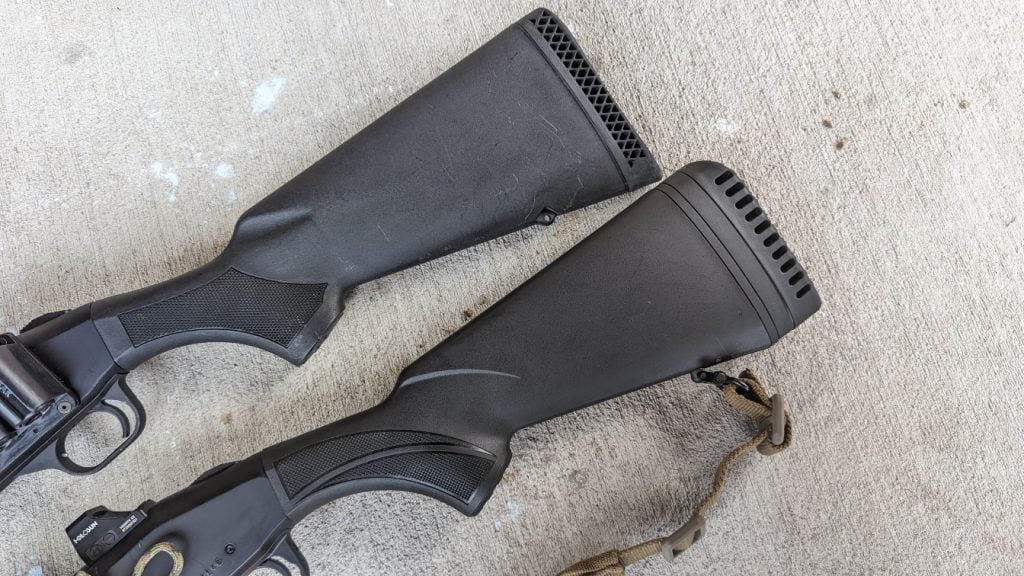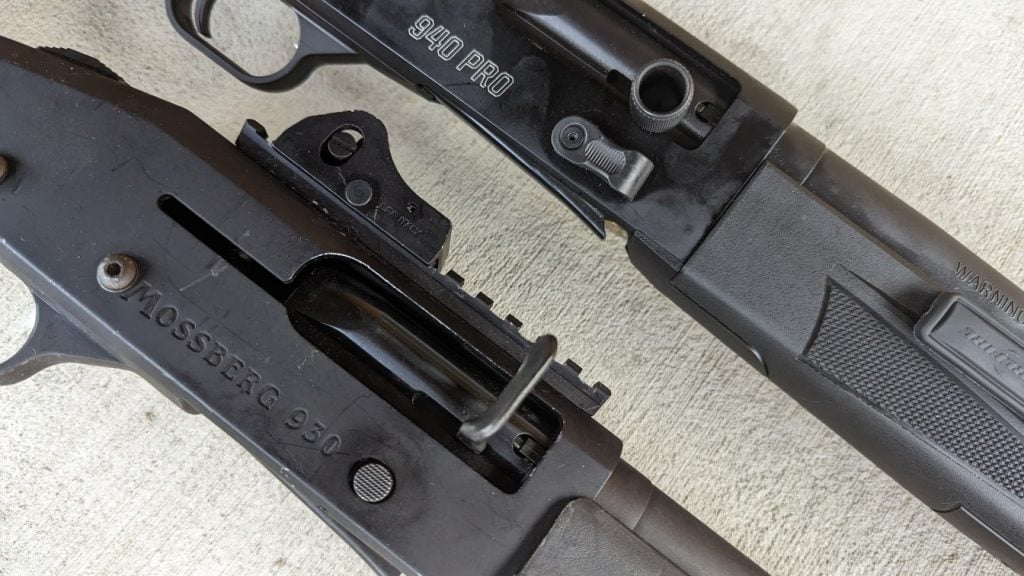Mossberg is well known for its shotguns; in fact, they are the number one American shotgun company. Mostly, they are known for their pump-action shotgun designs, but they have made big steps to enter the world of semi-auto shotguns. The company did make a few semi-auto shotguns in the past, but they never made a big splash. The first time Mossberg made an excellent impact in semi-auto shotguns was with the 930 series. Following the 930 came the 940 series, which Mossberg developed in collaboration with pro shooter Jerry Miculek.
What’s the difference between the Mossberg 930 and 940? That’s a solid question. As a shotgun nerd, I most certainly have both. I’ve had a 930 SPX for quite some time and have found it to be a solid shotgun. I grabbed a 940 Pro Tactical not too long after their introduction. I’ve run both guns hard and hefty, and while both are competent firearms, there are very clear differences.
The Tale of Mossberg Shotguns
Before we dive into their differences, we have to examine what makes them similar. Obviously, they are both shotguns. They are both 12 gauges, both semi-auto firearms, and both gas operated. As Mossberg shotguns, they both have the famed tang safety that’s ambidextrous and easily accessible.

Overall they have more in common than they don’t. It’s the small differences that make the two guns different, and they are admittedly quite different.
940 vs. 930 — The Obvious Differences
There are a few obvious differences anyone can pick up on. These obvious differences are certainly worth noting. If you are trying to choose between the two, these differences are substantial.
Optics Mounting
Mossberg has always been a little ahead of the curve when it comes to attaching optics. They drill and tap most of their shotguns for optics, and both the 940 and 930 can deliver an optically enhanced experience. Either shotgun allows you to add a rail or a special direct connect mount like the Scalarworks Sync designs. That makes adding an optic easy.

Early 940s were basically the same, but recently Mossberg has pushed out a new method to mount optics with the Tactical and Tukey model 940s. Not only can you drop a rail in place, but you can also directly attach an optic to the rear of the receiver.
Mossberg cuts the receiver much like a handgun slide to fit a Shield RMSc footprint optic. It allows for a simpler, direct-attach design that’s simply sturdier. Mounts, optics, and plates all create some issues with tolerance stacking. It’s not often a huge issue, but one worth noting.

The ability to directly attach an optic also mounts it lower, and you can co-witness with the bead of the shotgun. Overall the 940’s method is better.
Length of Pull
It’s taken quite some time to acknowledge that 14.5-inch lengths of pulls are fine for guns designed for clay pigeons but not so great for tactical shotguns. The 930 series uses a 14-inch length of pull, so it’s fairly long. To change the length of pull, you have to swap the stock, which can be a hassle.
With the 940 Pro series, they used a new, modern stock that allows you to alter the length of pull via a system of inserts. These inserts allow you to adjust the length of pull from 12.5 inches to 14.25 inches. This makes it easy to customize the fit. We first saw this system with Magpul and the SGA, and it’s now spread to seemingly every major semi-auto release.

Ergonomics
The Mossberg 930 SPX controls were fine — nothing special, but perfectly useable. Most owners likely upgraded the charging handle and bolt release as both were fairly small. They weren’t the smallest, and they were functional, but they left something to be desired.
The 940 series took out the need to replace anything. They made the controls larger and easier to access. The bolt release and charging handle are both huge. The safeties are identical, and that’s probably the only thing you’d ever want to swap out. While it’s not necessary, a larger safety is quite nice from my experience.

Another ergonomic change with the Mossberg 940 series was opening out the loading port. This design allowed the gun to be reloaded easier and quicker. It’s made for quad loads, but normal loads are also faster and easier.
Mossberg also slimmed up the front of the gun and made it substantially thinner. Thinner grips are easier to grab, and it’s impressive they reduced the bulk of the forend by so much.

The Not-So-Obvious Differences
There are two other differences that aren’t noticeable but are appreciated. The first involves what I think is the biggest problem with Mossberg shotguns.
Point of Aim, Point of Impact
Mossberg likes to stick their bead directly on the barrel of their guns. This works fine for standard buckshot, but with slugs and more modern tighter-grouping loads, it throws off the point of aim. Modern loads and slugs are seemingly thrown high. This creates an issue of a point of aim that doesn’t coincide with the point of impact.
Mossberg has taken note and adjusted the height of the front sight on the various 940 models to better match the point or aim and point of impact with modern buckshot and slugs. This answers a problem many of us have had with Mossbergs, and it’s nice to see it addressed.
Gas System
People often grumbled about the 930 series and claimed they were not reliable. In reality, they were plenty reliable but did need frequent maintenance. After 500 or so rounds of shooting, you best clean it. If you didn’t, it got sluggish, and it would stop running properly.
The 940 gas system is slightly redesigned for enhanced reliability. Mossberg claims it only ever needs to be cleaned every 1,500 or some rounds. That’s a lot of ammo with a shotgun, and it’s certainly a good idea to clean any semi-auto shotgun after 1,500 or so rounds. This new gas system has taken the gun to a new level.
The Mossberg 940 series is a drastic improvement over the 930 series. The Mossberg 940 Pro models have stolen my shotgun-loving heart, and I very much enjoy their designs. My Mossberg 940 has become my home defense shotgun and likely won’t be moving on anytime soon.

